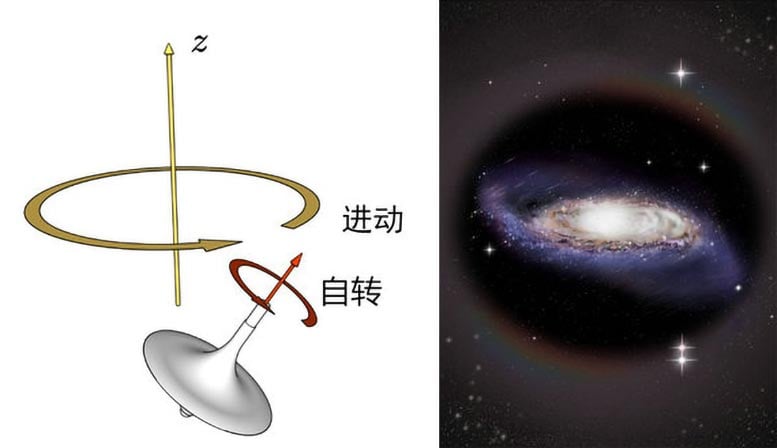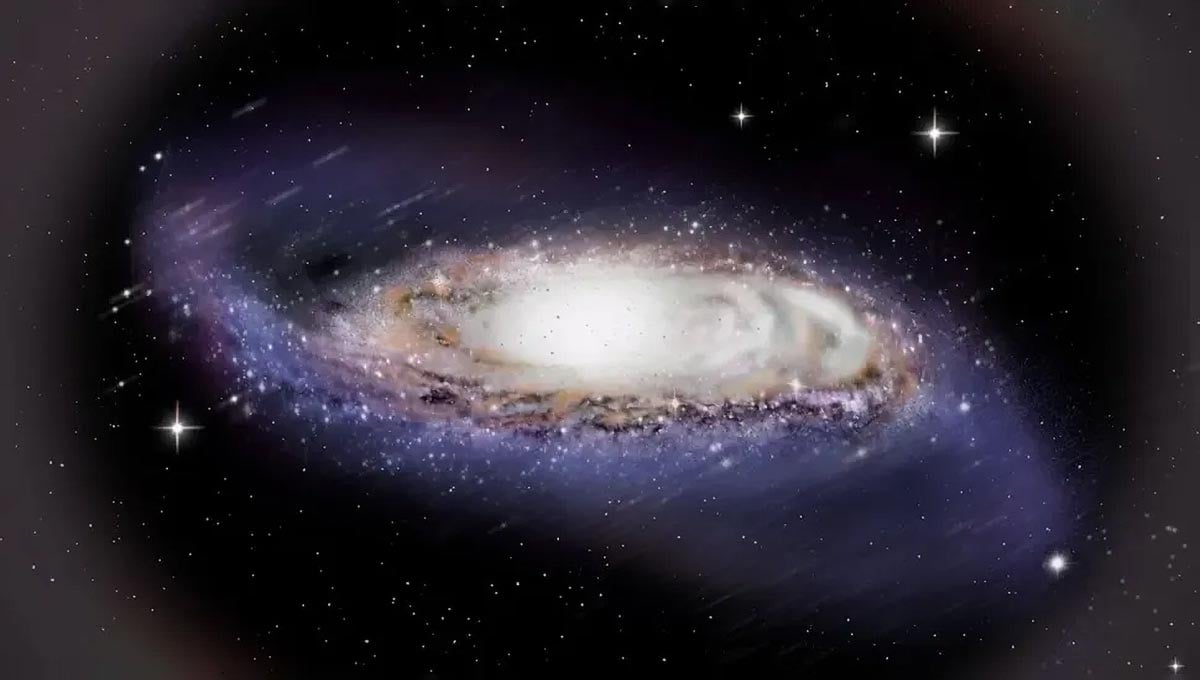Researchers have measured the Milky Way’s warp precession with Cepheid stars, uncovering an oblate dark matter halo influencing the galaxy’s structural dynamics. Credit: Kaiyuan Hou and Zhanxun Dong from the Shanghai Jiao Tong University
A research team developed a novel “motion picture” method to measure the precession rate of the 
Left panel: the spinning top precesses under the torque from gravity; Right panel: similar to the spinning top, the Galactic disk warp “dances gracefully” under the torque of the dark matter halo. Credit: Kaiyuan Hou and Zhanxun Dong from the Shanghai Jiao Tong University
Findings on Warp Precession and Galactic Dynamics
By “seeing” how the disk warp evolves with age, the researchers found that the warp precesses in a retrograde direction at a rate of 2 km/s/kpc (or 0.12 degrees per million years).
Further measurements showed that the warp’s precession rate gradually decreases with radius. Regardless of the origin of the warp, its precession rate and direction were jointly determined by the Galactic inner disk and the dark matter halo.
Implications for the Milky Way’s Dark Matter Halo
After subtracting the contribution of the Galactic inner disk, the researchers found that the current dark matter halo enveloping the warp exhibits a slightly oblate ellipsoidal shape with a flattening ratio q between 0.84 and 0.96 for the equipotential surfaces. Currently, only this shape can explain the remaining precession rate of the warp.
This study provides a crucial anchor point for studying the evolution of the Milky Way’s dark matter halo.
Reference: “A slightly oblate dark matter halo revealed by a retrograde precessing Galactic disk warp” by Yang Huang, Qikang Feng, Tigran Khachaturyants, Huawei Zhang, Jifeng Liu, Juntai Shen, Timothy C. Beers, Youjun Lu, Song Wang and Haibo Yuan, 27 June 2024, Nature Astronomy.
DOI: 10.1038/s41550-024-02309-5




















Discussion about this post